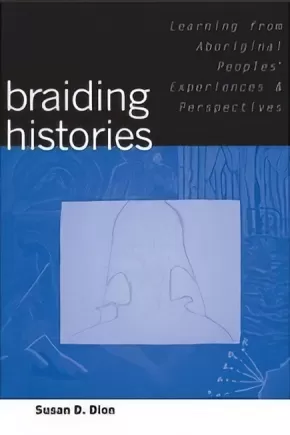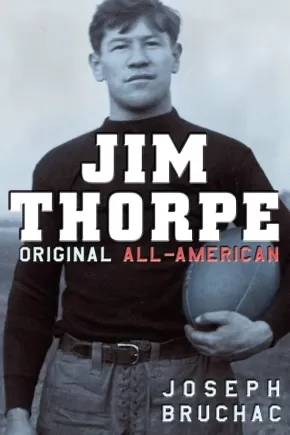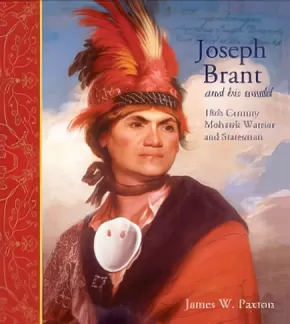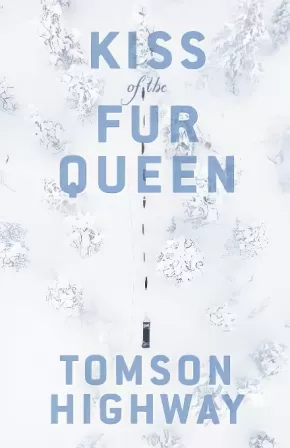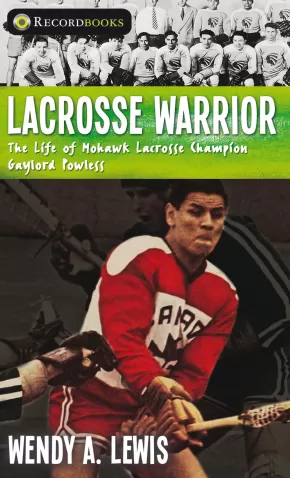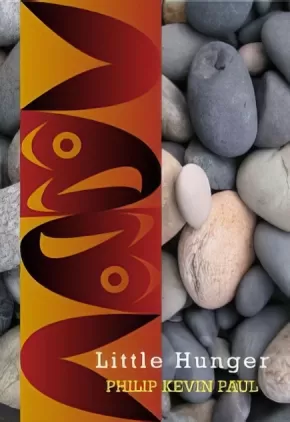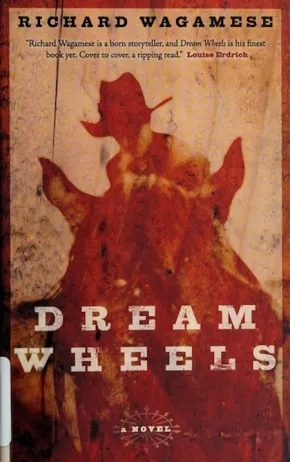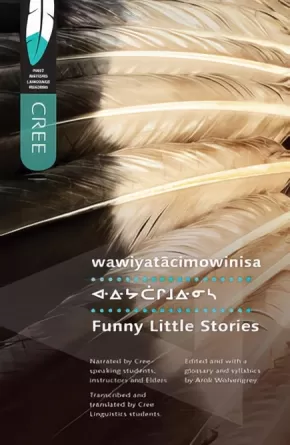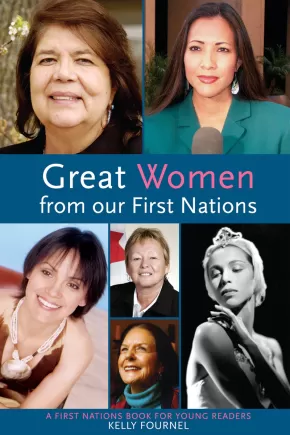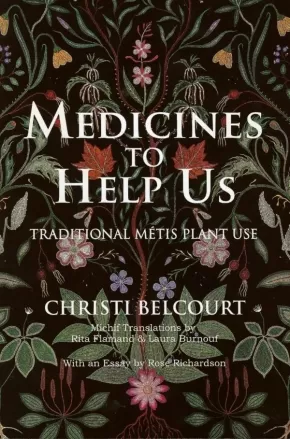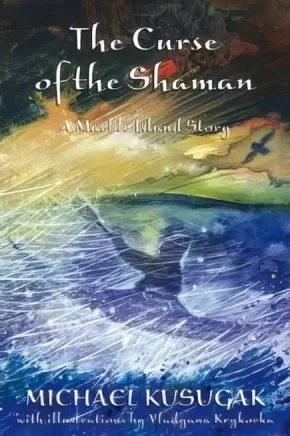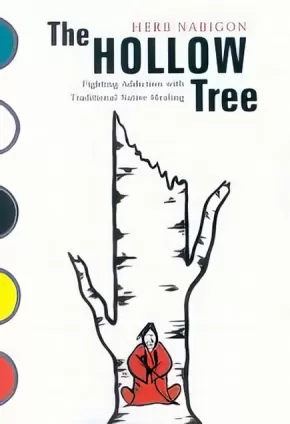
Indigenous Peoples in Canada
811
-
825
of
883 Results;
Sort By
Go To
of 59
Braiding Histories: Learning from Aboriginal Peoples' Experiences and Perspectives
$47.95
Format:
Paperback
Text Content Territories:
Indigenous Canadian;
Grade Levels: University/College;
ISBN / Barcode: 9780774815185
Synopsis:
Synopsis:
This book proposes a new pedagogy for addressing Aboriginal subject material, shifting the focus from an essentializing or "othering" exploration of the attributes of Aboriginal peoples to a focus on historical experiences that inform our understanding of contemporary relationships between Aboriginal and non-Aboriginal peoples.
Reflecting on the process of writing a series of stories, Dion takes up questions of (re)presenting the lived experiences of Aboriginal people in the service of pedagogy. Investigating what happened when the stories were taken up in history classrooms, she illustrates how our investments in particular identities structure how we hear and what we are "willing to know."
Braiding Histories illuminates the challenges of speaking/listening and writing/reading across cultural boundaries as an Aboriginal person to communicate Aboriginal experience through education. It will be useful to teachers and students of educational and Native studies and will appeal to readers seeking a better understanding of colonialism and Aboriginal--non-Aboriginal relations.
Suggested Grades: 10-12
ABPBC
Fearless Warriors
$19.95
Format:
Paperback
Text Content Territories:
Indigenous Canadian;
ISBN / Barcode: 9780889225978
Synopsis:
Synopsis:
Taylor's powerful, haunting and incredibly entertaining stories in Fearless Warrior are a full frontal assault on stereotypes of all kinds--an edifying affirmation of humanity unlike anything else. More than anything else, these stories shine with a wisdom, an understanding of the human condition, that is rare among writers courageous enough to take on these themes.
Internationally acclaimed as a playwright, screen-writer, comic and sardonic commentator on the endless gaffs, absurdities and the profound and painful misunderstandings that continue to characterize social interactions between aboriginal and non-aboriginal peoples, Taylor’s stories in Fearless Warriors are a full frontal assault on stereotypes of all kinds and an edifying affirmation of humanity unlike anything else in fiction.
Each of these stories is as remarkably different in terms of its unique narrative tone, origin and direction, as are the characters of his plays, making Taylor’s singular collection of fictions quite intentionally much more than the sum of their parts. By degrees dramatic, shocking, tender, chilling, affirmative and tragic, each story takes on a different cliché or “common sense understanding” of inter-racial and inter-cultural relations, all of them suffused with the incomparable wit, gentle and generous humour, mercilessly critical edge and profound emotional empathy of a master story-teller.
No quarter is given, nor is it taken—Native stereotypes of White culture are as fair a species of game for this writer as any other. Ultimately, each of these narratives becomes a bridge of understanding between cultures, giving its readers access to the seemingly inexplicable actions of characters at the distant edges of our imaginations—even just one of these stories, “The Boy in the Ditch,” does more to illuminate the tragedy of the pre-teen gasoline sniffing culture of Davis Inlet than any number of Royal Commissions will ever do.
Educator Information
Grades 10-12 BC English First Peoples resource for the units How Do We Define Ourselves and Place Conscious Learning - Exploring Texts through Local Landscape.
Additional Information
192 pages | 5.50" x 8.50"
Jim Thorpe: Original All American
$14.99
Format:
Paperback
Text Content Territories:
Indigenous American; Native American; Meskwaki (Fox); Sac (Sauk);
ISBN / Barcode: 9780142412336
Synopsis:
Synopsis:
Jim Thorpe's amazing accomplishments as an Olympic medal winner as well as an outstanding professional football and baseball player brings his story to life. Focusing on his years at Pennsylvania's Carlisle Indian School, this title highlights his early athletic career, while also dispelling some myths about him and movingly depicting the Native American experience at the turn of the 20th century.
Ages 12-15
Joseph Brant and His World: 18th Century Mohawk Warrior and Statesman
$19.95
Format:
Paperback
Text Content Territories:
Indigenous American; Native American; Haudenosaunee (Iroquois); Kanyen'keha:ka (Mohawk);
ISBN / Barcode: 9781552770238
Synopsis:
Synopsis:
Joseph Brant was a promising but undistinguished Mohawk warrior living in upper New York State. He became an innovative, influential leader and spokesperson for First Nations, whose support for Britain during the American Revolution led to their resettlement in Upper Canada along the Grand River. Their descendants live today on the large Six Nations Reserve alongside the Grand, south of Brantford in southwestern Ontario.
This new, illustrated biography of Brant reflects recent research into the political, social and cultural background of his life. Author James Paxton rejects the interpretation of earlier biographers, who depicted Brant as a man who belonged neither to the "Indian" or the "white" world. Paxton shows that Brant was fully Mohawk, with Iroquoian values that stressed the interdependence of people. He stands as the product of a unique, multicultural 18th-century community in the Mohawk Valley, New York.
Using skill and diplomacy and his dense network of relationships and alliances, Brant attempted to ensure the ongoing social, economic and political autonomy of the Six Nations in their new Canadian territory.
The events of Brant's day impinge directly on our own. It would be hard to imagine the standoff at Caledonia had Brant not led the Six Nations to the Grand River area and then invited Loyalists to settle among them. Yet, in 1784, Mohawks and Loyalists envisioned a different sort of community, one bound by history, common interest and shared practices. At a time when First Nations' claims against the government promise to become more numerous and confrontational, this book encourages us to consider the inclusive and multicultural legacy of Joseph Brant.
Additional Information
96 pages | 8.26" x 9.01"
Kiss of the Fur Queen
$22.00
Format:
Paperback
Text Content Territories:
Indigenous Canadian; First Nations; Cree (Nehiyawak);
ISBN / Barcode: 9780385697217
Synopsis:
Synopsis:
Kiss of the Fur Queen is a powerful and beautiful tale of siblings and tricksters, culture and trauma, and finding yourself in a world that tries to tell you who you are.
Born into a magical Cree world in snowy northern Manitoba, Champion and Ooneemeetoo Okimasis are all too soon torn from their family and thrust into the hostile world of a Catholic residential school. Their language is forbidden, their names are changed to Jeremiah and Gabriel, and both boys are abused by priests.
As young men, estranged from their own people and alienated from the culture imposed upon them, the Okimasis brothers fight to survive. But wherever they go, the Fur Queen--a wily, shape-shifting trickster--watches over them as they fulfill their destiny to become artists.
Educator Information
Grade 11/12 English First Peoples resource for the unit Further Steps toward Reconciliation - Understanding Residential Schools through Text.
Note: This novel contains mature and challenging material (profanity, coarse language, depictions of sex, sexual abuse, violence, etc.).
This resource is also available in French: Champion et Ooneemeetoo.
Additional Information
328 pages | 5.17" x 7.98"
Lacrosse Warrior: The Life of Mohawk Lacrosse Champion Gaylord Powless
$9.95
Format:
Paperback
Text Content Territories:
Indigenous Canadian; First Nations; Haudenosaunee (Iroquois); Kanyen'keha:ka (Mohawk);
ISBN / Barcode: 9781552770016
Synopsis:
Synopsis:
Gaylord Powless was playing lacrosse by the age of three. He descended from generations of Mohawk lacrosse players and possessed great skill, but his native ancestry made him the target of brutal checking, and slashing. This is a compelling story of how this champion learned to deal with emotions.
Ideal for reluctant readers.
Educator & Series Information
Recommended Ages: 12-18.
Fry Reading Level: 4.5
This book is part of the Recordbooks Series. Recordbooks help reluctant readers understand social issues through the lens of a true story of a sports hero.
Series features:
- Ideal for reluctant readers
- Hi-lo
- Short chapters, easy-to-read format
- Great for ESL and adult students
- Writing with a flair for making history feel like novels
- Accompanied by historical photos and sports trivia
- Ideal for ages 12+
Additional Information
120 pages | 4.25" x 7.00"
Little Hunger
$16.95
Format:
Paperback
Text Content Territories:
Indigenous Canadian; First Nations; Salish; Coast Salish; Saanich (WSANEC);
ISBN / Barcode: 9780889712201
Synopsis:
Synopsis:
Philip Kevin Paul's first book, Taking the Names Down from the Hill won the 2004 Dorothy Livesay Award for Poetry. In Little Hunger, his second book for the WSÁ,NEC (Saanich) Nation of Vancouver Island, Paul continues to draw upon the rich oral culture and traditions of his people.
From the eye of a whale rising from the deep, to an albino pigeon being nursed back to health, Paul's work addresses nature, family and traditions that get passed on from generation to generation. A raccoon's eyes become "holy doors of lost keys" and sockeye swim upstream. With elegance and wisdom, Paul speaks of "the stories gone sad, / singing to the hunger that made them, / running past the voices no longer speaking."
Suggested Grades: 11-12
ABPBC
Additional Information
96 pages | 5.25" x 7.50" | Paperback
Dream Wheels
$22.00
Format:
Paperback
Text Content Territories:
Indigenous Canadian; First Nations; Anishinaabeg; Ojibway; Sioux;
ISBN / Barcode: 9780385662000
Synopsis:
Synopsis:
Cowboy lore and First Nations mysticism in this affecting novel about the healing effects of family. In pursuit of a world-champion title, Joe Willie Wolfchild suffers a horrific, career-ending accident while riding a temperamental bull named C-4. His supportive family, longtime rodeo people, whisk him back to their ranch to recuperate. Far from the laconic stereotype, this book is filled with his soaring descriptions of the desert landscape, action-packed rodeo scenes, and reverence for hearth and home which will strike a chord with readers.
Dream Wheels is a vital and unsparing novel from one of the most fascinating voices in Canadian writing.
Joe Willie Wolfchild is on the verge of becoming a World Champion rodeo cowboy when a legendary bull cripples him. At the same time, in the same city, Claire Hartley is brutally assaulted and her 14-year-old son, Aiden, is critically injured during a burglary. The young Ojibway-Sioux man, the black single mother and her mulatto son find their lives irrevocably changed.
Joe Willie, a rodeo cowboy since he was a child, smolders in angry silence over a deformed left arm and a limp that make it impossible for him to compete. Claire, a victim of numerous bad relationships, withdraws from men and swears a bitter celibacy. Aiden gains notoriety among his criminal peers and slips into a self-destructive spiral of drugs and violence.
Eager to find a place for her son to channel his explosive energies, Claire brings Aiden to a rodeo camp run by the Wolfchild family, where he is drawn to bull riding and proves to be a stunning natural. But Joe Willie refuses to have anything to do with the camp, remaining an aloof, mysterious presence to Claire and the boy.
Birch Wolfchild, Joe Willie’s father, sees the potential for Aiden to become a champion and for his son to heal himself, if they can move beyond anger to forge a partnership. Claire’s and Joe Willie’s wounds bring them together in a surprising romance, and beneath it all is Birch Wolfchild’s tale of the changing of the life of the Indian cowboy.
Dream Wheels is a story about change. Moving from the Wild West Shows of the late 1880s to the National Finals Rodeo in Las Vegas to a lush valley in the mountains, it tells the story of a people’s journey, a family’s vision, a man’s reawakening, a woman’s recovery, and a boy’s emergence to manhood.
Reviews
“Richard Wagamese is a born storyteller and Dream Wheels is his finest book yet. Cover to cover a ripping read.” —Louise Erdrich
“A three-pronged story of redemption, kinship and healing. . . . Dream Wheels’s. . .wisdom is not community specific. It’s
universal.” —The Gazette (Montreal)
“Compelling. . . . With an opening passage reminiscent of Faulkner . . . Dream Wheels will delight cowboy literature fans, readers looking for a gorgeous turn of phrase, those interested in Native culture, or anyone simply after an engaging and satisfying story.” —Calgary Herald
Educator Information
Recommended Ages: 15+
Grades 10-11 BC English First Peoples resource for the unit on Relationships.
Additional Information
416 pages | 5.00" x 8.00"
Funny Little Stories / wawiyatacimowinisa (1 in stock, in reprint)
$12.95
Editors:
Format:
Paperback
Text Content Territories:
Indigenous Canadian; First Nations; Cree (Nehiyawak); Plains Cree; Swampy Cree ; Woodland Cree;
ISBN / Barcode: 9780889771857
Synopsis:
Synopsis:
This is the first in a series of readers in the First Nations languages of the prairie provinces meant for language learners and language users. The stories in this volume come from a variety of sources, all being narrated or written by fluent speakers of Cree, whether students or instructors of the Cree language or Elders. Funny Little Stories is a collection of nine stories representing the Plains Cree, Woods Cree, and Swampy Cree dialects, with a pronunciation guide and a Cree-to-English glossary.
Students and Elders come together in this volume to offer samples of three distinct genres of Cree storytelling: word play, humorous accounts of life experiences, and traditional stories about Wisahkecahk, the trickster-hero.
Each story is illustrated and is presented in both Standard Roman Orthography and syllabics, with English translation.
Educator & Series Information
Funny Little Stories is part of the First Nations Language Readers series. With a mix of traditional and new stories, each First Nations Language Reader introduces an Indigenous language and demonstrates how each language is used today. The University of Regina Press’s long-term goal is to publish all 60+ Indigenous languages of Canada.
Additional Information
110 pages | 5.50" x 8.50" | Narrated by Cree-speaking students, instructors, and Elders | Transcribed and Translated by Cree Linguistics Students | Edited and with a glossary and syllabics by Arok Wolvengrey
Authenticity Note: Because of the contribution of Indigenous Peoples, such as Cree-speaking Elders, to this work on Cree storytelling, it has received the Authentic Indigenous Text label.
Great Athletes from our First Nations
$10.95
Format:
Paperback
Text Content Territories:
Indigenous American; Indigenous Canadian;
ISBN / Barcode: 9780977918300
Synopsis:
Synopsis:
Great Athletes from our First Nations profiles thirteen outstanding athletes in such diverse sports as figure skating, race car driving, skiing and bowling. The athletes featured in this book include: Ross Anderson, downhill skier; Richard Dionne, champion basketball player; Mike Edwards, professional bowler; Shelly Hruska, professional ringette player; Beau Kemp, professional baseball player, etc.
Reviews
"Smoothly-written and enriched with photography and sidebars that give additional information about the sport or athlete."— Kliatt, May 2008
"A must-have in every school and public library, it can be used for cross-cultural education and healthy lifestyles."— Resource Links, June 2007
Educator & Series Information
This book is part of the First Nations Series for Young Readers. Each book is a collection of biographies of First Nations, Métis, and Inuit women and men who are leaders in their fields of work, in their art, and in their communities.
For ages 9-14.
Additional Information
128 pages | 6.00" x 8.92"
Great Women from our First Nations
$10.95
Format:
Paperback
Text Content Territories:
Indigenous American; Indigenous Canadian;
ISBN / Barcode: 9781897187258
Synopsis:
Synopsis:
This book profiles ten outstanding women leaders in the Native community. All of these successful, trailblazing women are stellar role models who have raised the profile of indigenous culture in North America. From heroines of the past to women making new history today, this exciting work of nonfiction reminds readers of the extraordinary contributions of Native Americans to our daily lives.
Educator & Series Information
This book is part of the First Nations Series for Young Readers. Each book is a collection of biographies of First Nations, Métis, and Inuit women and men who are leaders in their fields of work, in their art, and in their communities. For ages 9-14.
Additional Information
89 pages | 6.00" x 8.98"
Medicines to Help Us: Traditional Métis Plant Use
$25.00
Artists:
Text Content Territories:
Indigenous Canadian; Métis;
ISBN / Barcode: 9780920915790B
Synopsis:
Synopsis:
Based on Métis artist Christi Belcourt’s painting “Medicines to Help Us,” this innovative and vibrant resource honours the centuries-old healing traditions of Métis women. With contributions from Métis Elders Rose Richardson and Olive Whitford, as well as key Michif phrases and terminology, Medicines to Help Us is the most accessible resource relating to Métis healing traditions produced to date.
Educator Information
This resource guide does not include the study prints referred to on the back cover and within the book.
Michif Translators: Laura Burnoff and Rita Flamand
Elder Validation: Rose Richardson
Format: Book Only - English, with plant names in Michif, Nehiyawewin (Cree), and Anishinaabemowin (Ojibway)
The Night Wanderer: A Native Gothic Novel
$12.95
Artists:
Format:
Paperback
Text Content Territories:
Indigenous Canadian; First Nations; Anishinaabeg;
ISBN / Barcode: 9781554510993
Synopsis:
Synopsis:
A sleepy native reservation. A troubled teen girl. A vampire returns home.
Nothing ever happens on the Otter Lake reservation. But when 16-year-old Tiffany discovers her father is renting out her room, she's deeply upset. Sure, their guest is polite and keeps to himself. But he''s also a little creepy.
Little do Tiffany, her father or even her astute Granny Ruth suspect the truth. The mysterious Pierre L'Errant is actually a vampire, returning to his tribal home after centuries spent in Europe. But Tiffany has other things on her mind: her new boyfriend is acting weird, disputes with her father are escalating, and her estranged mother is starting a new life with somebody else.
Fed up and heartsick, Tiffany threatens drastic measures and flees into the bush. There, in the midnight woods, a chilling encounter with L'Errant changes everything... for both of them.
A mesmerizing blend of Gothic thriller and modern coming-of-age novel, The Night Wanderer is unlike any other vampire story.
Reviews
"One of Quill and Quire's Books of the Year 2007: "Shivers and chills in an Anishinabe setting... refreshingly smart humour." — Patty Lawlor, Quill and Quire, December 2007
"Teens who devour vampire fiction will enjoy this unusual slant on the oft-told legend." — Jan Chapman, VOYA, June 2008
Educator Information
Recommended Ages: 12-18.
Grades 10-12 BC English First Peoples resource for units on Identity, Place-Conscious Learning, and Relationships.
This book is available in French: Le rôdeur de nuit
Additional Information
218 pages | 5.00" x 7.25"
Curse of the Shaman: A Marble Island Story
$12.99
Artists:
Format:
Paperback
Text Content Territories:
Indigenous Canadian; Inuit;
ISBN / Barcode: 9780006395126
Synopsis:
Synopsis:
Sometimes even shamans get cranky. That was baby Wolverine’s misfortune — to be cursed by an out-of-sorts shaman frustrated by his own baby daughter’s incessant crying. Not only has shaman Paaliaq forbidden the future marriage of Wolverine to Breath, Paaliaq’s beautiful but teary baby girl, he has cursed Wolverine, banishing him when he becomes a young man. And even when a contrite Paaliaq later revokes the curse, the shaman’s even crankier magic animal will not. Now Wolverine finds himself stranded on a barren island, locked in a life-or-death struggle to return to his home, his family and a very special young girl.
Michael Kusugak, consummate storyteller and bestselling author, conjures up an Inuit tale of adventure, perseverance and first-time love shot through with humanity and humour. This is a story perfect for its pre-teen and ’tween audience, where even the strong and the mighty have bad days, the bully gets his due and a dream can come true.
Author's Note: "I was thinking The Curse Of The Shaman, A Marble Island Story would make a wonderful book for those studying Inuit in social studies programs."
Reviews
"Wonderful! I loved every minute of it. Native story-telling at its best."— Tomson Highway, author of Fox on the Ice and Dragonfly Kites
Additional Information
168 pages | 5.50" x 8.25"
The Hollow Tree Fighting Addiction with Traditional Native Healing
$20.95
Format:
Paperback
Text Content Territories:
Indigenous Canadian; First Nations; Anishinaabeg; Ojibway; Cree (Nehiyawak);
ISBN / Barcode: 9780773531321
Synopsis:
Synopsis:
Before discovering native healing methods, Herb Nabigon could not imagine a life without alcohol. His powerful autobiography, The Hollow Tree, tells the story of his struggle to overcome addiction with the help of the spiritual teachings and brotherly love of his elders.
Nabigon had spent much of his life wrestling with self-destructive impulses, feelings of inferiority and resentment, and alcohol abuse when Eddie Bellerose, an Elder, introduced him to the ancient Cree teachings. With the help of healing methods drawn from the Four Sacred Directions, the refuge and revitalization offered by the sweat lodge, and native cultural practices such as the use of the pipe Nabigon was able to find sobriety.
The Hollow Tree is one person's testament to the power of indigenous culture to heal. Herb Nabigon's healing journey guided him to a life of kindness, honesty, courage, and humility.
Sort By
Go To
of 59

